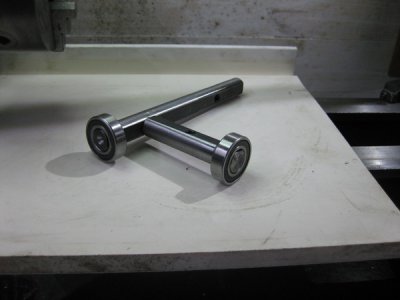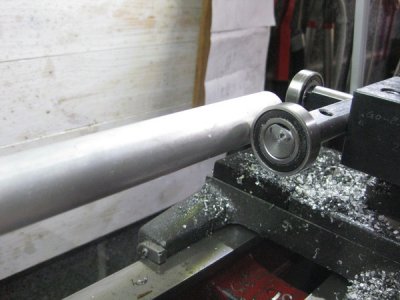OK, Got the back gear adjusted to where it stays engaged while running. Turns out it was just the set screw that adjusts the back gear was a bit too loose. Tightened it down just a bit and it works fine now. Today I took some of the lead screw gearing apart to give it a good scrubbing and I have a few questions before I try to take the gearing any further apart...
Should the large gear that attaches directly to the lead screw come off the shaft freely so that the entire gearing bracket can be removed ?? It seemed to be stuck so I didn't want to try to force it. Also I noticed the threading dial wasn't working correctly when engaged to the lead screw. It's very strange since it seems to work correctly when moving the carriage assembly manually ??? I can turn the handle and the threading dial turns with the carriage movement but when I engage the half-nut lever the carriage begins to move but the threading dial does not .....??????? I'm kinda stumped on that one and the manual doesn't offer any suggestions.
Should the large gear that attaches directly to the lead screw come off the shaft freely so that the entire gearing bracket can be removed ?? It seemed to be stuck so I didn't want to try to force it. Also I noticed the threading dial wasn't working correctly when engaged to the lead screw. It's very strange since it seems to work correctly when moving the carriage assembly manually ??? I can turn the handle and the threading dial turns with the carriage movement but when I engage the half-nut lever the carriage begins to move but the threading dial does not .....??????? I'm kinda stumped on that one and the manual doesn't offer any suggestions.


